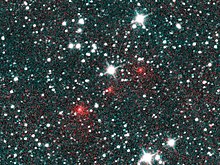
Data science is an interdisciplinary academic field[1] that uses statistics, scientific computing, scientific methods, processing, scientific visualization, algorithms and systems to extract or extrapolate knowledge and insights from potentially noisy, structured, or unstructured data.[2]
Data science also integrates domain knowledge from the underlying application domain (e.g., natural sciences, information technology, and medicine).[3] Data science is multifaceted and can be described as a science, a research paradigm, a research method, a discipline, a workflow, and a profession.[4]
Data science is "a concept to unify statistics, data analysis, informatics, and their related methods" to "understand and analyze actual phenomena" with data.[5] It uses techniques and theories drawn from many fields within the context of mathematics, statistics, computer science, information science, and domain knowledge.[6] However, data science is different from computer science and information science. Turing Award winner Jim Gray imagined data science as a "fourth paradigm" of science (empirical, theoretical, computational, and now data-driven) and asserted that "everything about science is changing because of the impact of information technology" and the data deluge.[7][8]
A data scientist is a professional who creates programming code and combines it with statistical knowledge to create insights from data.[9]
- ^ Donoho, David (2017). "50 Years of Data Science". Journal of Computational and Graphical Statistics. 26 (4): 745–766. doi:10.1080/10618600.2017.1384734. S2CID 114558008.
- ^ Dhar, V. (2013). "Data science and prediction". Communications of the ACM. 56 (12): 64–73. doi:10.1145/2500499. S2CID 6107147. Archived from the original on 9 November 2014. Retrieved 2 September 2015.
- ^ Danyluk, A.; Leidig, P. (2021). Computing Competencies for Undergraduate Data Science Curricula (PDF). ACM Data Science Task Force Final Report (Report).
- ^ Mike, Koby; Hazzan, Orit (20 January 2023). "What is Data Science?". Communications of the ACM. 66 (2): 12–13. doi:10.1145/3575663. ISSN 0001-0782.
- ^ Hayashi, Chikio (1 January 1998). "What is Data Science ? Fundamental Concepts and a Heuristic Example". In Hayashi, Chikio; Yajima, Keiji; Bock, Hans-Hermann; Ohsumi, Noboru; Tanaka, Yutaka; Baba, Yasumasa (eds.). Data Science, Classification, and Related Methods. Studies in Classification, Data Analysis, and Knowledge Organization. Springer Japan. pp. 40–51. doi:10.1007/978-4-431-65950-1_3. ISBN 9784431702085.
- ^ Cao, Longbing (29 June 2017). "Data Science: A Comprehensive Overview". ACM Computing Surveys. 50 (3): 43:1–43:42. arXiv:2007.03606. doi:10.1145/3076253. ISSN 0360-0300. S2CID 207595944.
- ^ Tony Hey; Stewart Tansley; Kristin Michele Tolle (2009). The Fourth Paradigm: Data-intensive Scientific Discovery. Microsoft Research. ISBN 978-0-9825442-0-4. Archived from the original on 20 March 2017.
- ^ Bell, G.; Hey, T.; Szalay, A. (2009). "Computer Science: Beyond the Data Deluge". Science. 323 (5919): 1297–1298. doi:10.1126/science.1170411. ISSN 0036-8075. PMID 19265007. S2CID 9743327.
- ^ Davenport, Thomas H.; Patil, D. J. (October 2012). "Data Scientist: The Sexiest Job of the 21st Century". Harvard Business Review. 90 (10): 70–76, 128. PMID 23074866. Retrieved 18 January 2016.